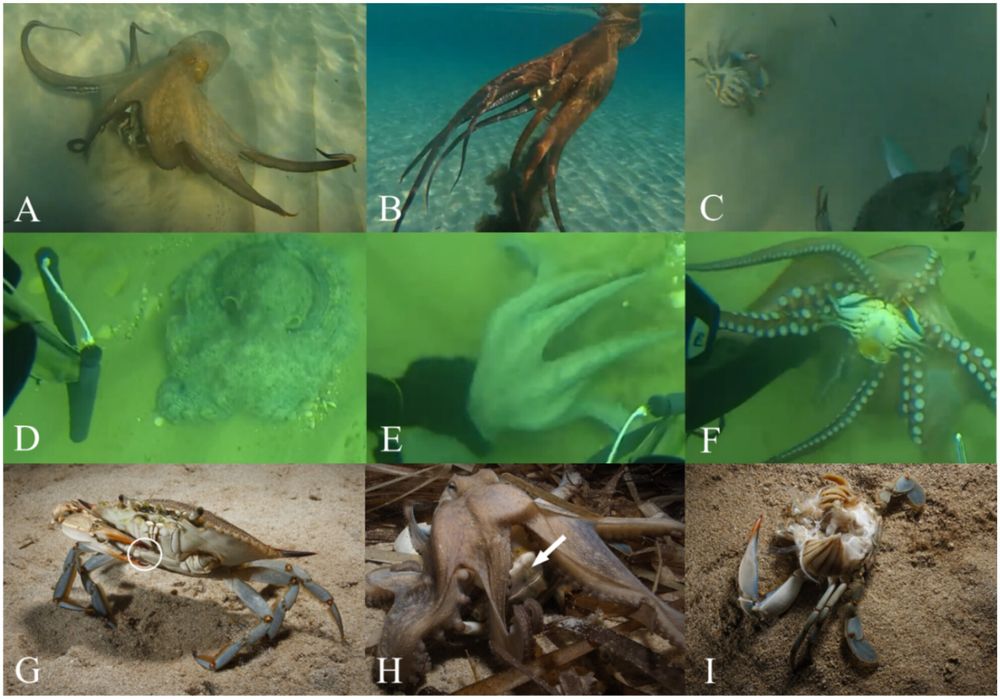🔗 doi.org/10.3897/neob...
@liverpooluni.bsky.social

🔗 doi.org/10.3897/neob...
@liverpooluni.bsky.social
@ebdonana.bsky.social @um.es
New OA paper: www.sciencedirect.com/science/arti...

@ebdonana.bsky.social @um.es
New OA paper: www.sciencedirect.com/science/arti...
joom.ag/mIjd

joom.ag/mIjd
Find the paper here: link.springer.com/article/10.1...
Find the newsletter here: viewer.joomag.com/invasions-ne...

Find the paper here: link.springer.com/article/10.1...
Find the newsletter here: viewer.joomag.com/invasions-ne...

🔄 Exchange of foreign species
🟰 Nearby places start off similar, so divergence is obvious
🔎 Local changes are studied in more detail
🎲 Ecological fallout is more random on small scales
‼️ This varies by context
@natureportfolio.nature.com
www.nature.com/articles/s41...

🔄 Exchange of foreign species
🟰 Nearby places start off similar, so divergence is obvious
🔎 Local changes are studied in more detail
🎲 Ecological fallout is more random on small scales
‼️ This varies by context
@biolinvasions.bsky.social . Spoiler alert - less than 10% of the list are native plants. Read it here: rdcu.be/edCZ7 🌺
@biolinvasions.bsky.social . Spoiler alert - less than 10% of the list are native plants. Read it here: rdcu.be/edCZ7 🌺
doi.org/10.3897/neob...

doi.org/10.3897/neob...
doi.org/10.3897/neob...

doi.org/10.3897/neob...
🪺 urban blue tits lay fewer eggs than forest blue tits
🏙️ due to habitat difficulties, not adaptation
🐥 they still overestimate how many young they can support
Cities can be tough places to raise chicks!
#urbanecology #urbanwildlife #urbanbirds
This issue is dedicated to our latest Special Feature, "Intraspecific Variation in Evolution and Ecology".
📸 : Juliano Morimoto

🪺 urban blue tits lay fewer eggs than forest blue tits
🏙️ due to habitat difficulties, not adaptation
🐥 they still overestimate how many young they can support
Cities can be tough places to raise chicks!
#urbanecology #urbanwildlife #urbanbirds
🔻 Recovery of dominant oak 🌳 and pine 🌲 suppressed
🔺 Shade-tolerant, nitrogen-loving plants more common 🌱
🔺 Other introduced species more common 🌿
@neobiota.pensoft.net #invasionecology

🔻 Recovery of dominant oak 🌳 and pine 🌲 suppressed
🔺 Shade-tolerant, nitrogen-loving plants more common 🌱
🔺 Other introduced species more common 🌿
@neobiota.pensoft.net #invasionecology
doi.org/10.3897/neob...

doi.org/10.3897/neob...
#worldwildlifeday2025 #gammarus #japanwildlife #wildlifewriting #naturewriting #synanthropy

#worldwildlifeday2025 #gammarus #japanwildlife #wildlifewriting #naturewriting #synanthropy
⏩ quicker to grab prey
⚔️ more likely to fend off theft
than a native competitor
This is the kind of experiment that picks out the details underpinning ecological change 🔬
neobiota.pensoft.net/article/1419...
#bioinvasions

⏩ quicker to grab prey
⚔️ more likely to fend off theft
than a native competitor
This is the kind of experiment that picks out the details underpinning ecological change 🔬

www.wpr.org/environment/...

www.wpr.org/environment/...
Check it out and learn about invasive Goldfish in North America
academic.oup.com/fisheries/ad...

Check it out and learn about invasive Goldfish in North America
academic.oup.com/fisheries/ad...
onlinelibrary.wiley.com/doi/full/10....
##bioinvasions #marineinvasions

onlinelibrary.wiley.com/doi/full/10....
##bioinvasions #marineinvasions
🐍🏠 #Nonnative #Aesculapian snakes use the warmth of homes and compost heaps to survive the Welsh climate

🐍🏠 #Nonnative #Aesculapian snakes use the warmth of homes and compost heaps to survive the Welsh climate
Highlights how threats such as
👉Poaching 📉
👉Predation by domestic dogs 🐕
👉Disease transmission 🧪
👉Disturbance by wild boar 🐗
...may potentially lead to species extinction 🌏
🔗 https://buff.ly/4b0tJ5f

Highlights how threats such as
👉Poaching 📉
👉Predation by domestic dogs 🐕
👉Disease transmission 🧪
👉Disturbance by wild boar 🐗
...may potentially lead to species extinction 🌏
🔗 https://buff.ly/4b0tJ5f
HOLD ON, WHAT'S THIS?

HOLD ON, WHAT'S THIS?
From @nature.com
#UrbanEvolution #synurban #urbanecology #Culexpipiens

From @nature.com
#UrbanEvolution #synurban #urbanecology #Culexpipiens

#citizenscience
Thousands of European citizen scientists helped identify shifts in the #floral traits of #insect-#pollinated #plants: besjournals.onlinelibrary.wiley.com/doi/10.1111/...

#citizenscience
Thousands of European citizen scientists helped identify shifts in the #floral traits of #insect-#pollinated #plants: besjournals.onlinelibrary.wiley.com/doi/10.1111/...

Thousands of European citizen scientists helped identify shifts in the #floral traits of #insect-#pollinated #plants: besjournals.onlinelibrary.wiley.com/doi/10.1111/...

